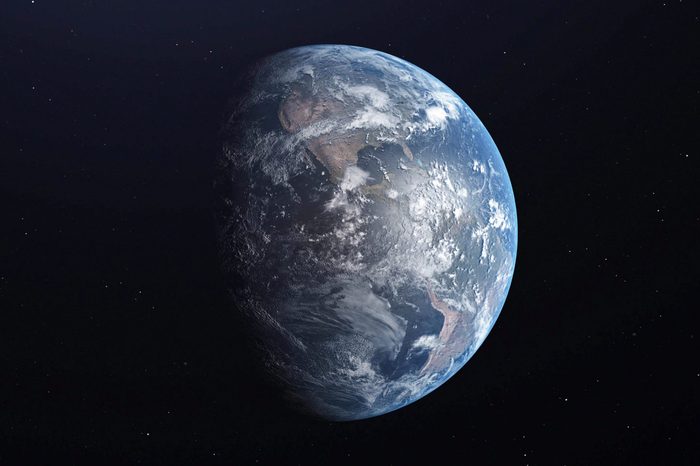
How well do you know your home planet?
Assuming you live on planet Earth. If not, we come in peace. Test your home planet knowledge with these questions. You’d be surprised how little we all know about this rock we call home. You might just need these crazy facts about Earth you never learned in school to ace this one.
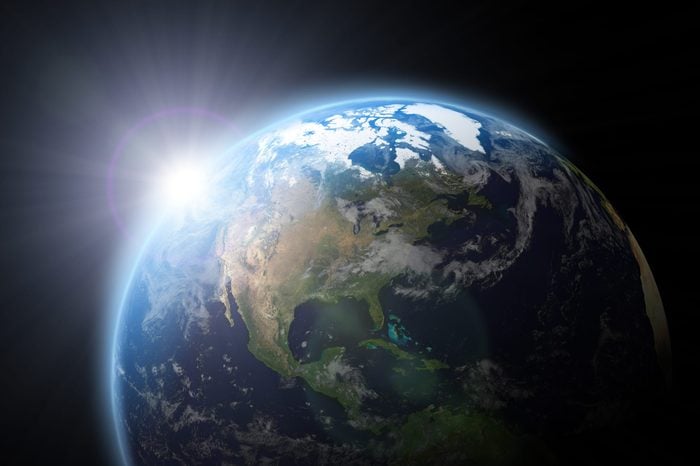
Which planet(s) is/are in between Earth and the sun?
A. Mercury and Mars
B. Mercury and Venus
C. Just Mercury

B. Mercury and Venus
The order of our planets from the sun are Mercury, Venus, Earth, Mars, Jupiter, Saturn, Uranus, and Neptune.

How big is Earth’s radius?
A. 4,000 miles
B. 5,000 miles
C. 6,000 miles
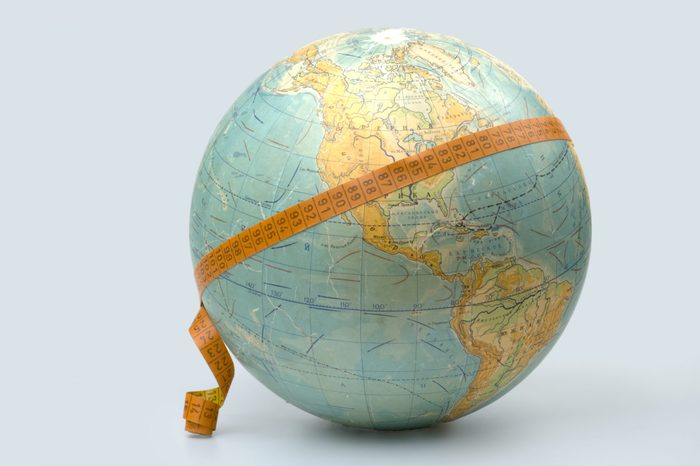
A. 4,ooo miles
The Earth’s radius is 3,958.8 miles long, and its circumference is 24,873.6 miles. Who knew? If you like this quiz, you’ll love these world facts you didn’t know you wanted to know.
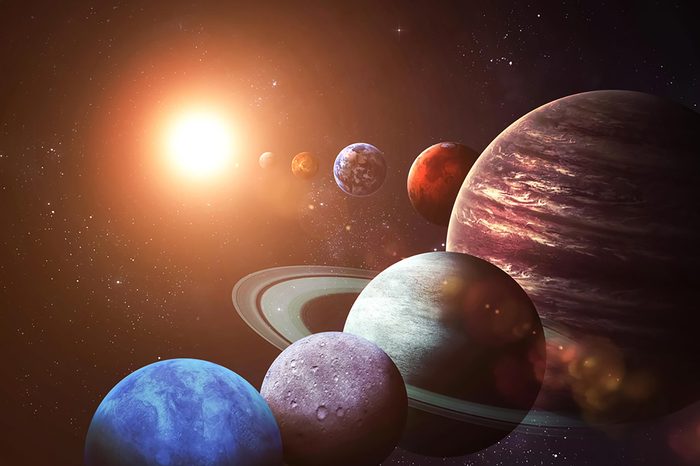
How does Earth’s size compare to the other planets?
A. The third-largest
B. The fifth-largest
C. The second smallest
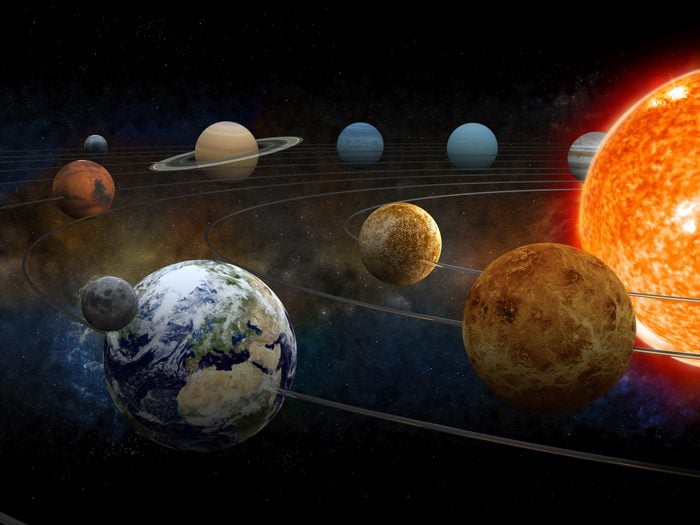
B. The fifth-largest
At least in regards to the planets in our solar system. The planets in order from largest to smallest are Jupiter, Saturn, Uranus, Neptune, Earth, Venus, Mars, and Mercury. And then there’s the dwarf planet, Pluto. If you were in school before 2006, you probably learned that Pluto was the 9th planet, but just like these other facts you learned in school that are no longer true, you’re going to have to update your knowledge about that one.

About how many people currently live on Earth?
A. 7 billion
B. 7.3 billion
C. 7.5 billion
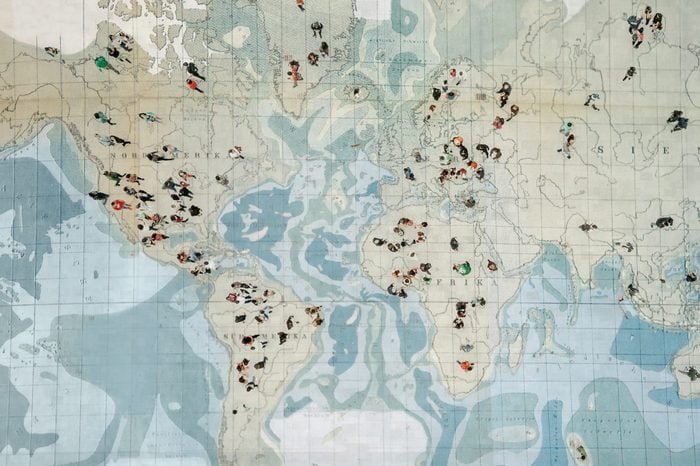
C. 7.5 billion
Although technically this number changes every day, currently the Earth’s population is over 7.5 billion people, all sharing this one small planet. With all those people it’s no wonder the planet is in trouble. Here are 50 powerful photos that prove that the Earth still needs our help.

When do scientists think life began on Earth?
A. 3.8 billion years ago
B. 4.5 billion years ago
C. 6 billion years ago
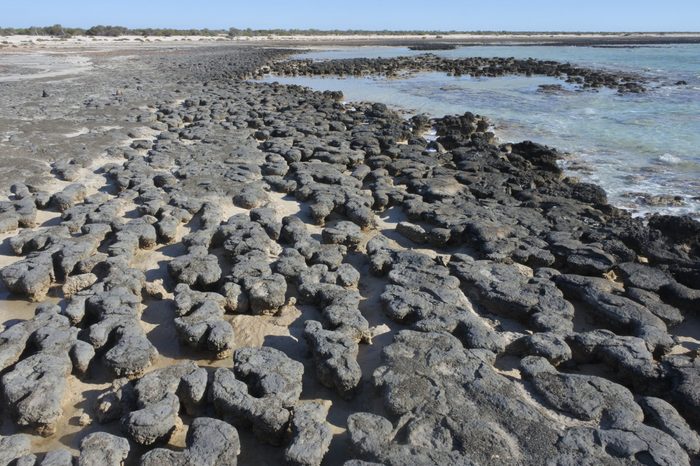
A. 3.8 billion years ago
Life may have appeared 3.8 billion years ago, but according to scientists, Earth is at least 4.5 billion years old. All this time later, there are still places on this planet that are unmapped!

How long have we been calling this planet Earth?
A. At least 700 years
B. At least 1,000 years
C. At least 2,000 years

B. At least 1,000 years
Earth is the only planet not named after a Greek or Roman god or goddess. Here are 24 more astronomy facts you didn’t learn in school.

Earth is a terrestrial planet. What does that mean?
A. It is made mostly of rock.
B. It has dirt on its surface.
C. It has an atmosphere that can sustain life.

A. It is made mostly of rock.
The other terrestrial planets are Mercury, Venus, and Mars. Enjoy Earth facts? You’ll love the biggest unsolved mysteries on planet Earth.
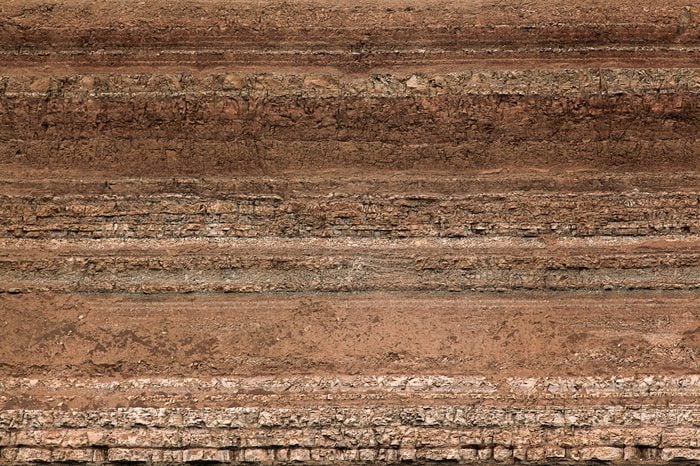
How many layers does Earth have?
A. Three
B. Four
C. Five
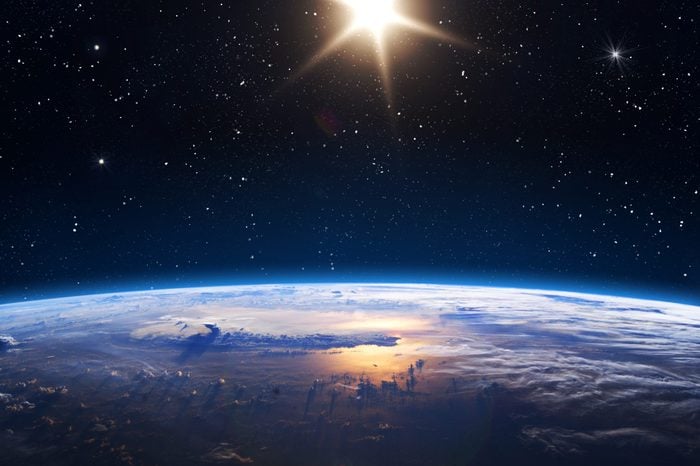
B. Four
They are the inner core, the outer core, the mantle, and the crust.

How hot can the Earth’s core get?
A. 8,600 degrees Fahrenheit
B. 9,200 degrees Fahrenheit
C. 9,800 degrees Fahrenheit
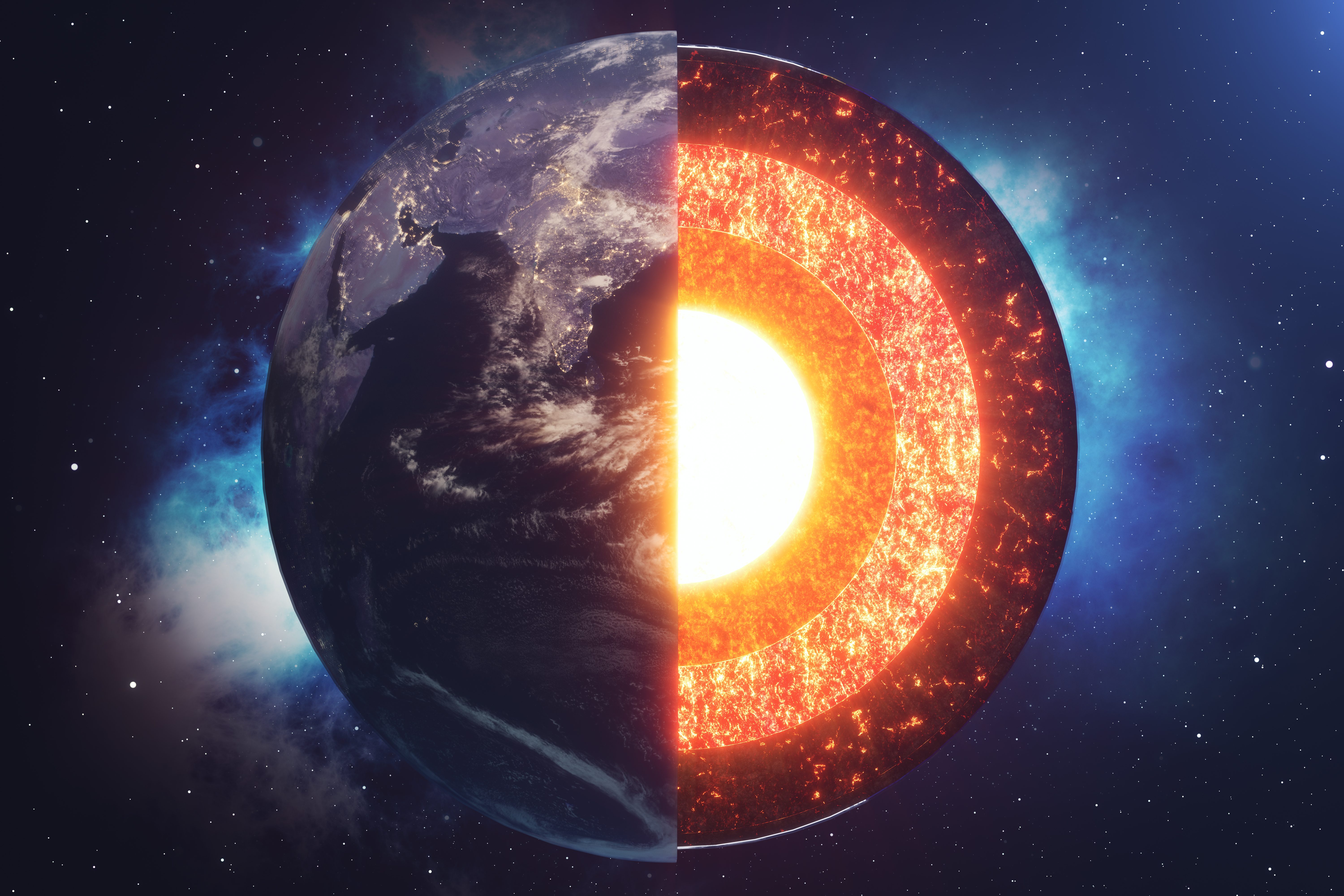
C. 9.800 degrees Fahrenheit
A more recent study suggests that it could be even hotter, perhaps even as hot as the sun! Confused by this measurement? Here’s why Americans use Fahrenheit instead of Celsius.
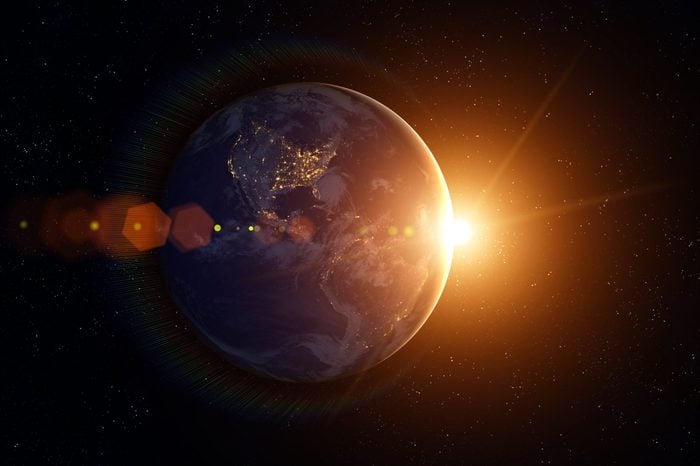
How long is Earth’s orbit around the sun?
A. More than 580 million miles
B. More than 106 miles
C. More than 84 million miles
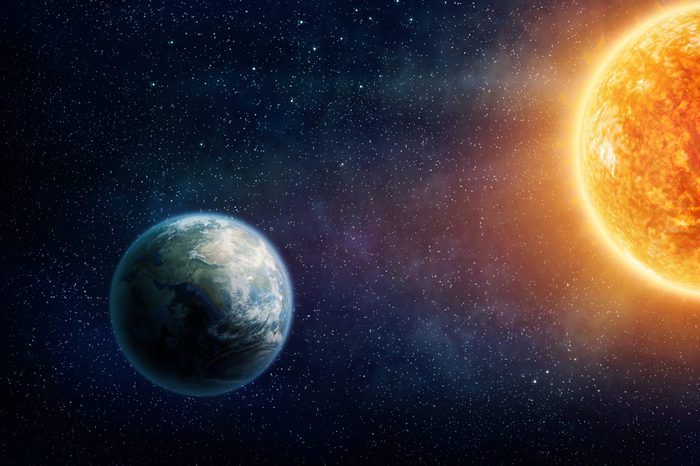
A. More than 580 million miles
The Earth’s orbit is 584 million miles long. Even crazier than that number? The truth behind the distance between the Earth and the sun.
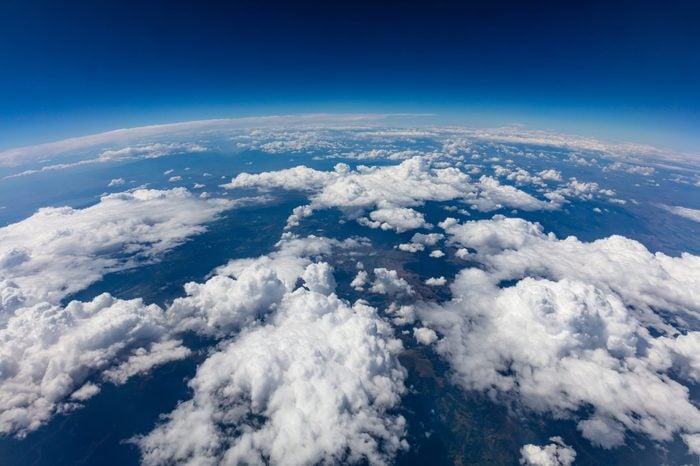
What makes up nearly 80 percent of the Earth’s atmosphere?
A. Oxygen
B. Nitrogen
C. Carbon dioxide
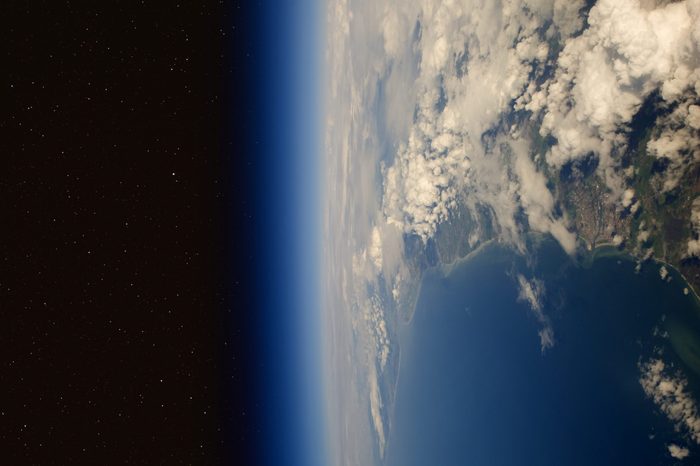
B. Nitrogen
Near Earth’s surface, the atmosphere is 78 percent nitrogen, 21 percent oxygen, and 1 percent other gases like carbon dioxide, argon, and neon. Next, enjoy these surprising Earth Day statistics.
